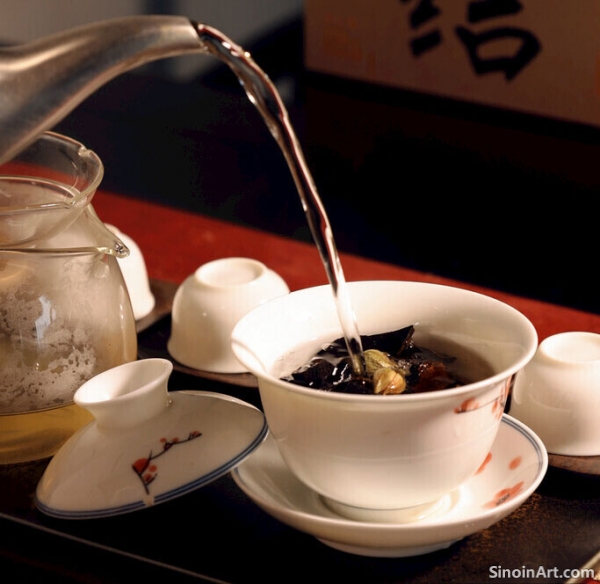White Tea: The Minimalist Approach to Tea Processing
|
White tea, considered one of the most delicate and least processed of all tea varieties, is a unique product of Chinese tea culture. Originating primarily from the Fujian province, white tea is known for its subtlety, its silver-tipped buds, and its light, floral character. The production process of white tea is minimalistic, aiming to preserve the natural state of the leaf with minimal human intervention. This results in a tea with a delicate flavor profile, rich in antioxidants.  The harvesting of white tea is a critical process, with only the youngest buds and leaves being selected. The “Silver Needle” (Bai Hao Yin Zhen), a premium variety, uses only unopened buds, while the "White Peony" (Bai Mu Dan) includes both buds and young leaves. This careful hand-selection is one of the key reasons why white tea is often more expensive than other tea types. The selection process is a testament to the careful attention to detail that characterizes Chinese tea culture.  The processing of white tea mainly consists of withering and drying. Unlike green or black tea, it does not undergo any oxidation or pan-frying. The leaves are simply allowed to air dry in natural sunlight or in a controlled environment. This gentle approach helps to retain the natural flavors and antioxidants, resulting in a tea that is light, refreshing, and exceptionally pure.  The simple process of brewing white tea is essential in order to fully appreciate its subtle characteristics. The tea is usually steeped at a low temperature and for a shorter time than most teas. The result is a clear liquor with a delicate aroma and a smooth, slightly sweet taste. White tea is a testament to the beauty of simplicity, highlighting the natural beauty of the tea leaf. In essence, white tea embodies a philosophy of minimalism, purity, and appreciation for nature. From the careful hand-picking of the tender buds to the simple drying methods, white tea is a reflection of the harmony between human skill and nature's gift. It is a celebration of subtle flavors and natural beauty within the world of Chinese tea. |
Tag : White tea, Chinese tea, minimal processing, Bai Hao Yin Zhen, Bai Mu Dan, tea harvest
Related information
- Materials of Chinese Teaware: From Clay to Porcelain
- The Delicacy of White Tea: Minimal Processing, Maximum Flavor
- Tea and Health: Exploring the Wellness Benefits of Chinese Tea
- Pu-erh Tea: The Complex World of Fermented Tea
- The Legacy of Pu-erh: A Tea That Ages Like Fine Wine
This article explores the diverse range of materials used in creating Chinese teaware, examining their unique properties, aesthetic qualities, and how they affect the flavor and experience of drinking tea.
This article focuses on white tea, highlighting its minimal processing, the subtlety of its flavors, and its delicate aroma, along with tips on brewing and enjoying this unique tea.
This article examines the various health benefits associated with drinking Chinese tea, discussing its antioxidant properties, potential impact on cardiovascular health, and its overall contribution to well-being.
This article explores the unique world of Pu-erh tea, examining its fermentation process, aging potential, the various types available, and the regional significance of this unique tea.
Delve into the fascinating world of Pu-erh tea, a unique Chinese tea prized for its aging potential. Learn the difference between Sheng and Shou Pu-erh and how the fermentation process transforms its flavor over time.